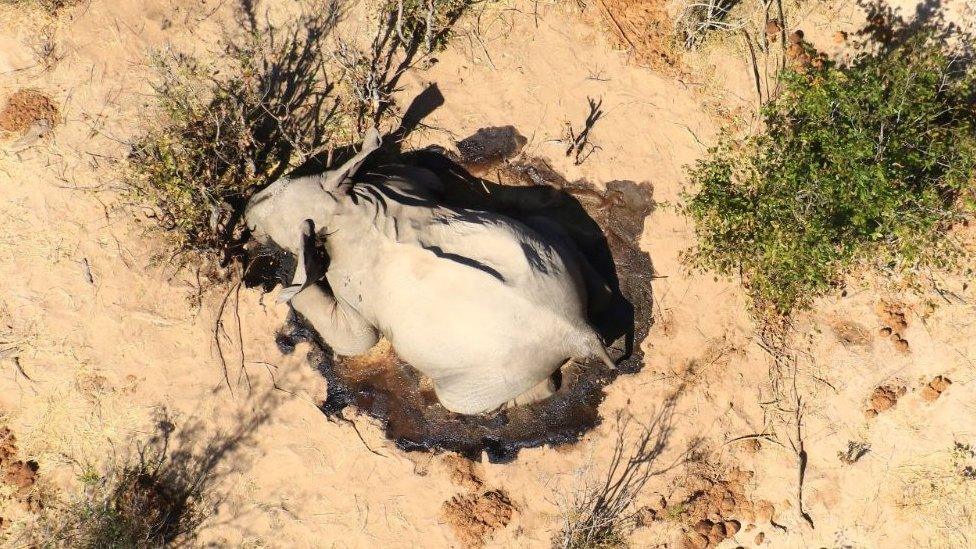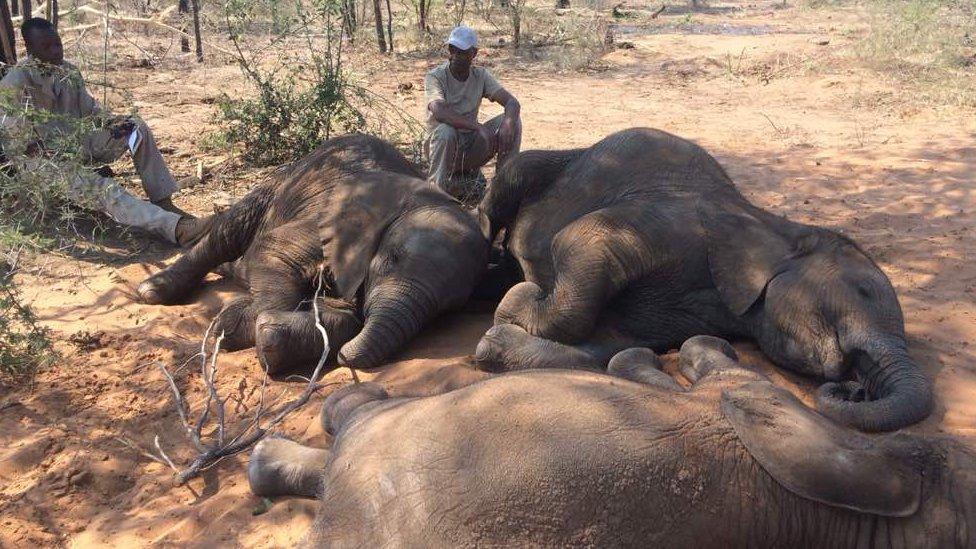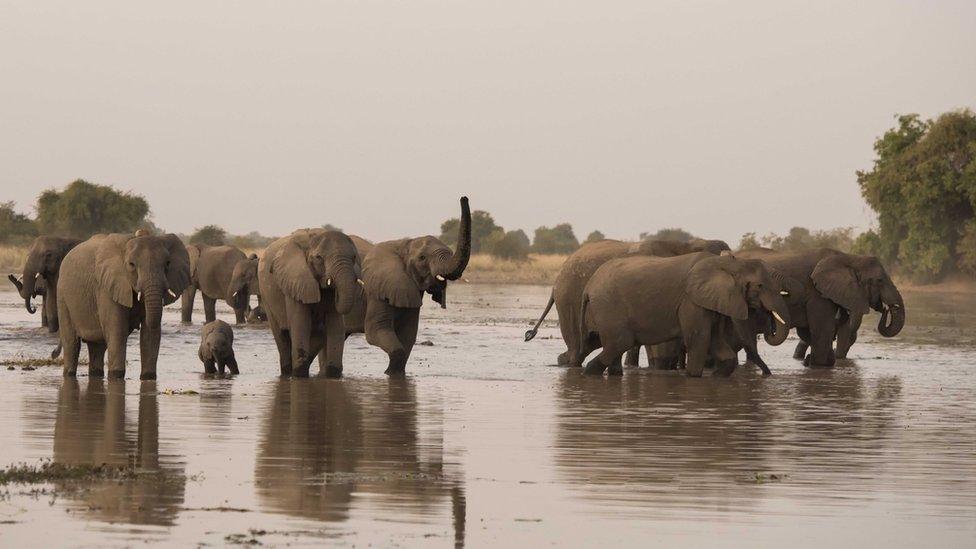Botswana: Lab tests to solve mystery of hundreds of dead elephants
- Published

Botswana is investigating "completely unprecedented" deaths of hundreds of elephants since May.
The government said three laboratories in Canada, South Africa and Zimbabwe would be asked to "process the samples taken from the dead elephants".
More than 350 elephant carcasses have been spotted in Botswana's Okavango Delta in the past two months.
No-one knows why the animals are dying in Botswana - home to a third of Africa's declining elephant population.
Warning: Some people may find the following images upsetting
In a report prepared for the government, conservation organisation Elephants Without Borders (EWB) said its aerial surveys showed that elephants of all ages appeared to be dying, according to Reuters.
Dr Niall McCann, of the UK-based charity National Park Rescue, earlier this week told the BBC that local conservationists first alerted the government in early May, after they undertook a flight over the delta.
"They spotted 169 in a three-hour flight," he said. "To be able to see and count that many in a three-hour flight was extraordinary.
"A month later, further investigations identified many more carcasses, bringing the total to over 350."
"This is totally unprecedented in terms of numbers of elephants dying in a single event unrelated to drought," he added.

Back in May, Botswana's government ruled out poaching as a reason - noting the tusks had not been removed, according to Phys.org.
There are other things which point to something other than poaching.
"It is only elephants that are dying and nothing else," Dr McCann said. "If it was cyanide used by poachers, you would expect to see other deaths."
Dr McCann has also tentatively ruled out natural anthrax poisoning, which killed at least 100 elephants in Botswana last year.
But they have been unable to rule out either poisoning or disease. The way the animals appear to be dying - many dropping on their faces - and sightings of other elephants walking in circles points to something potentially attacking their neurological systems, Dr McCann said.

Either way, without knowing the source, it is impossible to rule out the possibility of a disease crossing into the human population - especially if the cause is in either the water sources or the soil. Dr McCann points to the Covid-19 pandemic, which is believed to have started in animals.
"Yes, it is a conservation disaster - but it also has the potential to be a public health crisis," he said.
- Published7 February 2020

- Published3 September 2018

- Published27 December 2017
